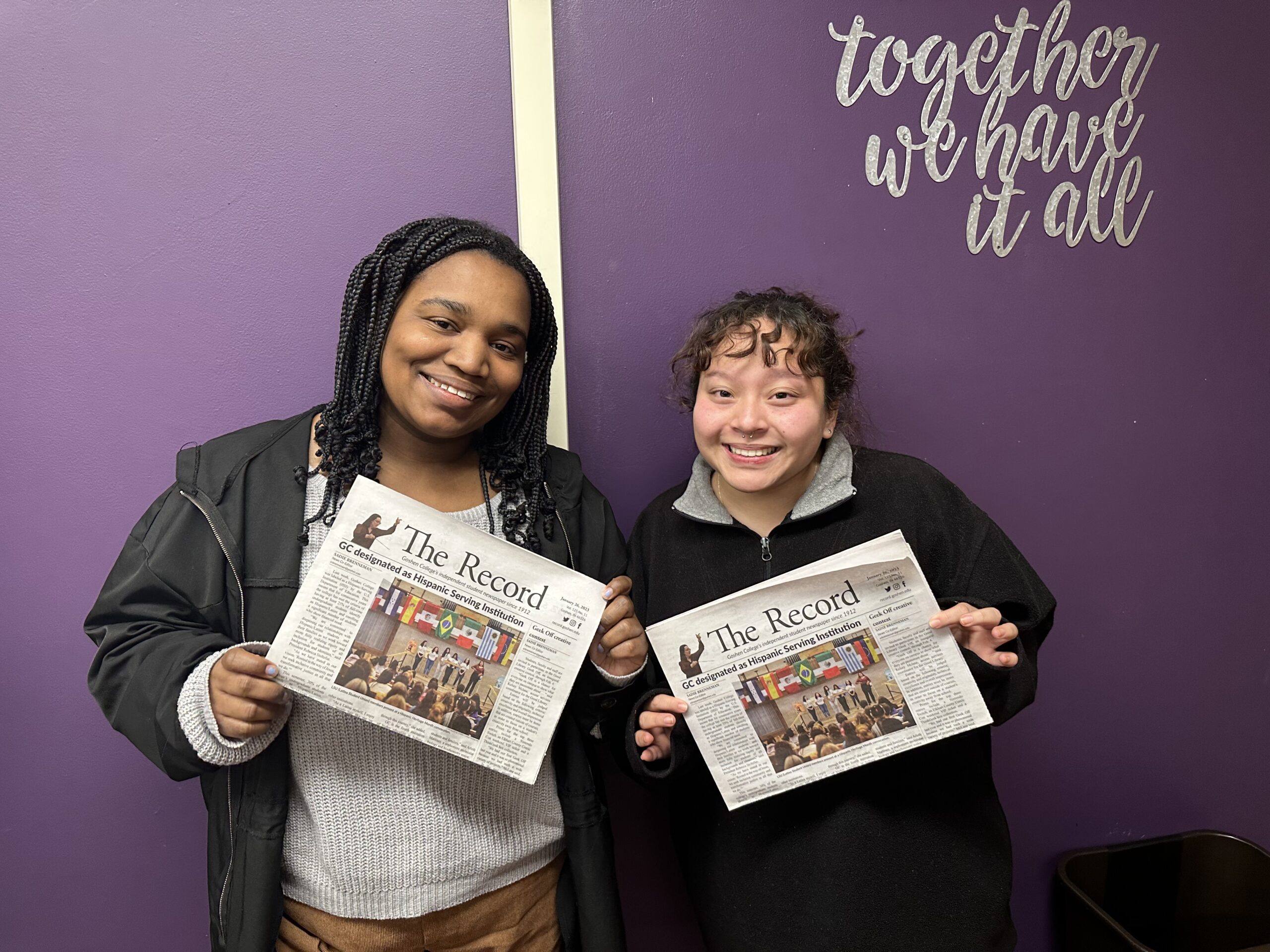We first joined The Record staff as arts page co-editors. We then took on the features and news pages together. It is only fitting to co-write this editorial to end our semester as co-executive editors.
At the first editorial meeting of the semester, we asked our staff to visit AreYouPressworthy.com. The Columbia Journalism Review created the website to calculate “press value based on current reporting in America.” To calculate one’s value, one must enter their age, gender, state and ethnicity.We were only worth 20 and 26 news stories. In comparison, a missing white woman in her early 20s would be covered in over 120 news stories. In our staff, the highest number was 126 and the lowest was 19. We then spoke to our staff about our goals for the semester.
Our main objective was to diversify the team of staff and the stories featured in each issue.
While we ran into issues finding a diverse staff, we are specifically grateful to Isis Espinoza and Kevin Liddell for joining The Record. We remember what it felt like to be one of the few staff of color. We hope they are proud of their work.
Goals for diversifying The Record came from our experience navigating GC as students of color, where we often feel misrepresented or flat-out excluded. We hoped that working as editors would allow us to find ways of bridging this disconnect.
Needless to say, we are proud of our work and the goals we accomplished while serving as co-editors.
As for specific moments, here are some that we will hold from our time as executive editors, be it for good or bad:
Scrolling through social media and finding The Record creates dialogue, whether constructive or not. Either way, it signals to us that The Record is being read.
All the facial expressions in the editorial room when an article or photo falls through, but somehow we end up pulling everything together on those late Wednesday nights in The Hub.
Distributing the newspaper on Thursday mornings and seeing the empty boxes. The preview copy will sometimes be taken, especially when it is an intriguing issue.
Seeing clippings of our work in student life and other areas on campus, like in our Black Student Union advisor’s office on the wall.
Putting some copies at a table, walking back through and seeing people have already picked them up.
And perhaps the most pivotal moment we will cherish is that our platform has served as a catalyst for shedding light on systemic issues — to the extent that people have come to us and shared the impact that The Record is making.
Students and faculty have also personally contacted us to share experiences of racism and discrimination, reaffirming the importance of The Record’s platform and its ability to call attention to discrepancies.
Many of these stories would not have been made possible without our staff. We are not a small staff, evident by our masthead on the right. Still, this list doesn’t encapsulate all of the people that have touched The Record this semester, whom we appreciate.
Our staff has to work on a strict deadline. We meet Friday mornings and put the issue together on Wednesdays. Scheduling and holding interviews takes up slots in already-full schedules. They do all of this work, and more, unpaid.
When coming to GC, neither of us ever envisioned ourselves doing this work. While we admired and appreciated it, we didn’t think it was a space for us.
We hope that future executive editors remember and appreciate the power a newspaper, even one as small as ours, can hold, especially for marginalized people. We hope that they are not afraid to cover complicated issues.
We expect that the concerns brought to light this semester are taken seriously by administrators who will show they are listening with prompt and sustained action, without relying on students to advocate for themselves.
Our biggest hope is that other students of color can see themselves in this position and remember the value of their voice, that they understand that this institution needs students of color more than students of color need GC.





